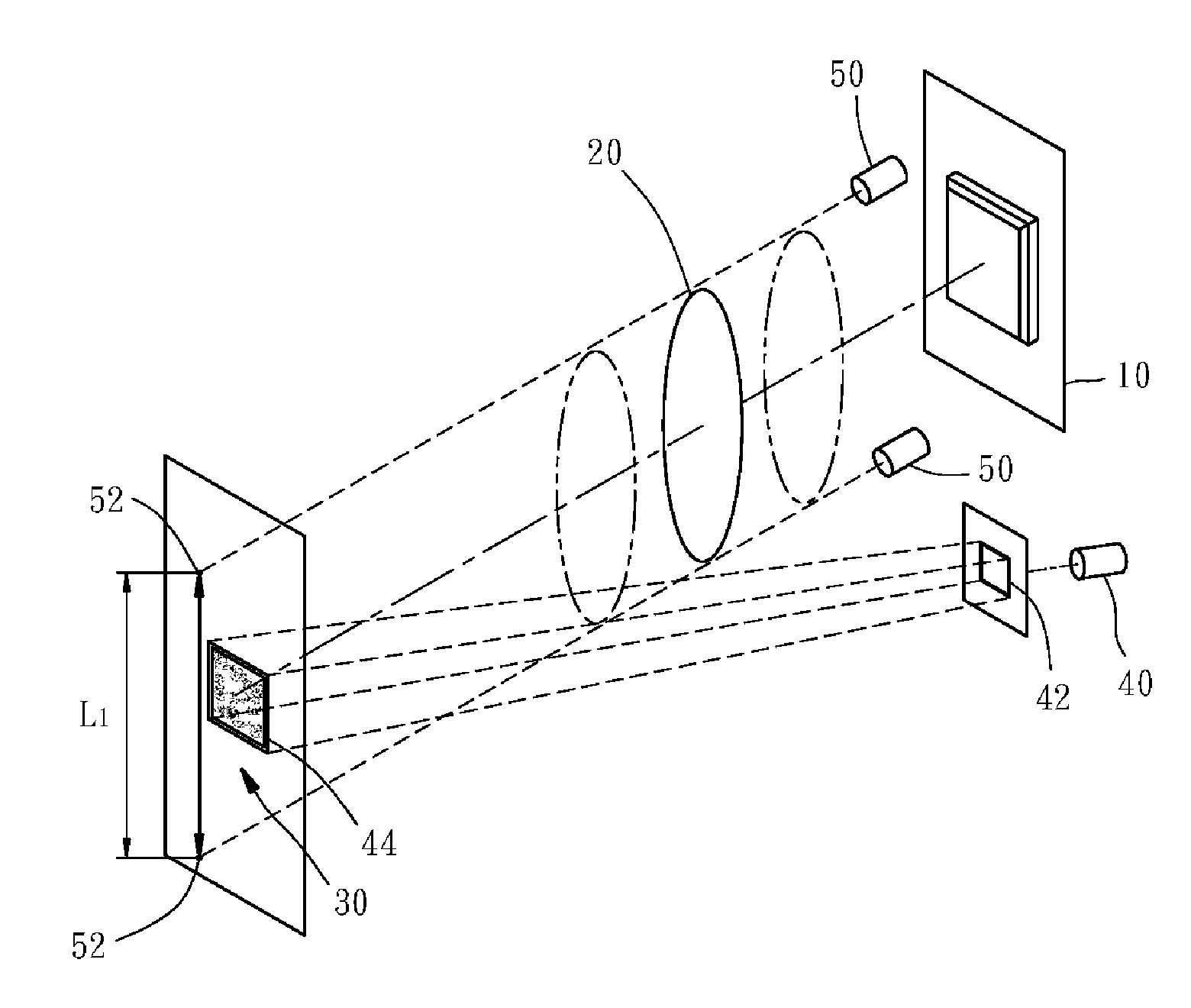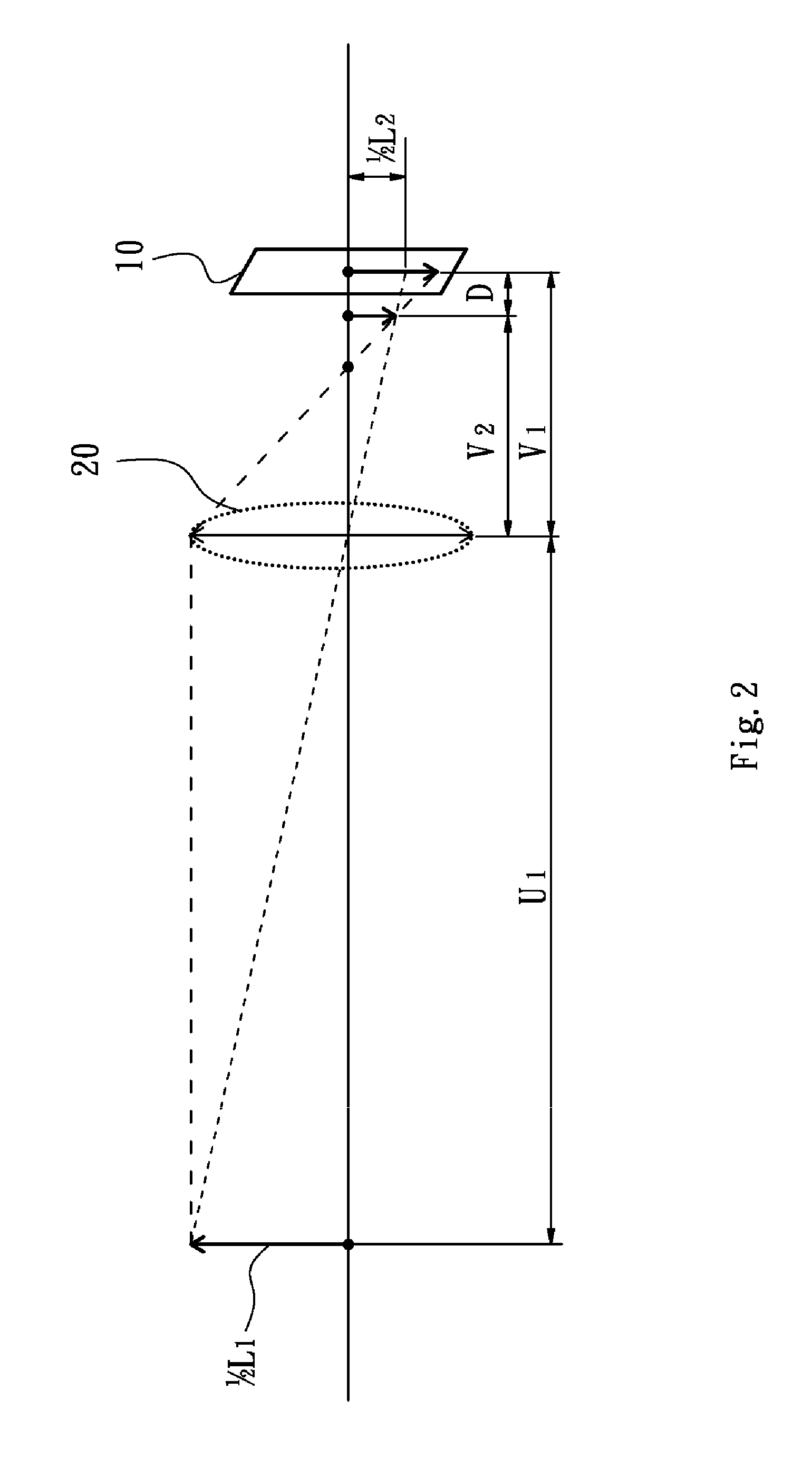Barcode Reading Method and Barcode Reading Device
- Summary
- Abstract
- Description
- Claims
- Application Information
AI Technical Summary
Benefits of technology
Problems solved by technology
Method used
Image
Examples
Embodiment Construction
[0024]Referring to FIGS. 1, 2, 3 and 4, a preferred embodiment of the invention provides a barcode reading method and a barcode reading device. The barcode reading method includes the steps as follow.
[0025]Firstly, in a capturing step of an image of a barcode, an image sensor 10 is utilized to capture an image of a barcode 30 via an optical lens 20, in which the optical lens 20 itself is provided with an optical focal distance, and an initial image distance V1 is provided between the image sensor 10 and the optical lens 20.
[0026]In the process of capturing the image of the barcode 30, a light source 40 is utilized to project a lighting frame 44 toward the barcode 30 via a frame body 42 so that the image sensor 10 can be correctly aligned with the barcode 30. In this preferred embodiment, the light source 40 is a light-emitting diode. The lighting frame 44 is located at the middle of the barcode 30. The light source 40 and the image of the barcode 30 are distinguishable so that the i...
PUM
 Login to View More
Login to View More Abstract
Description
Claims
Application Information
 Login to View More
Login to View More - R&D
- Intellectual Property
- Life Sciences
- Materials
- Tech Scout
- Unparalleled Data Quality
- Higher Quality Content
- 60% Fewer Hallucinations
Browse by: Latest US Patents, China's latest patents, Technical Efficacy Thesaurus, Application Domain, Technology Topic, Popular Technical Reports.
© 2025 PatSnap. All rights reserved.Legal|Privacy policy|Modern Slavery Act Transparency Statement|Sitemap|About US| Contact US: help@patsnap.com



